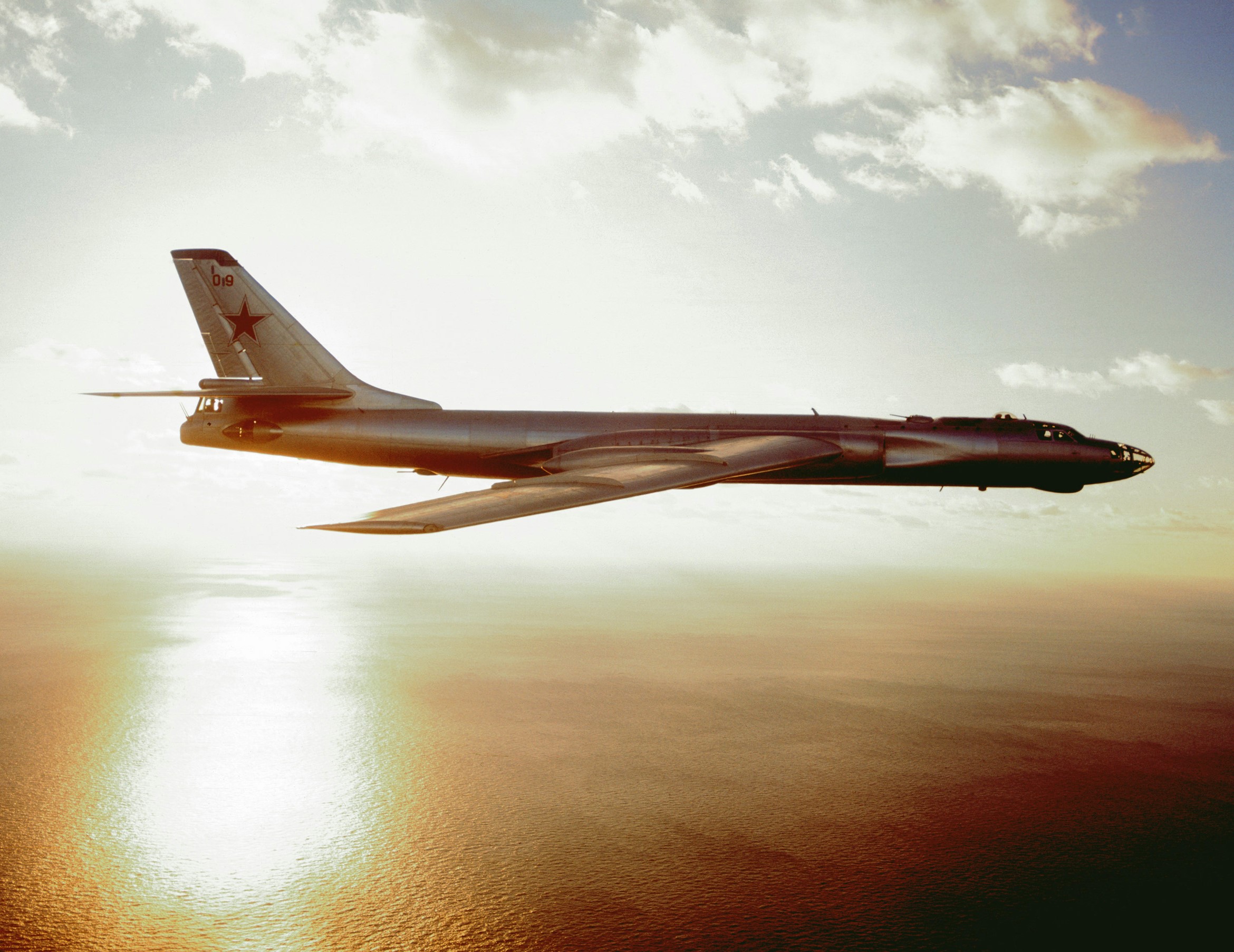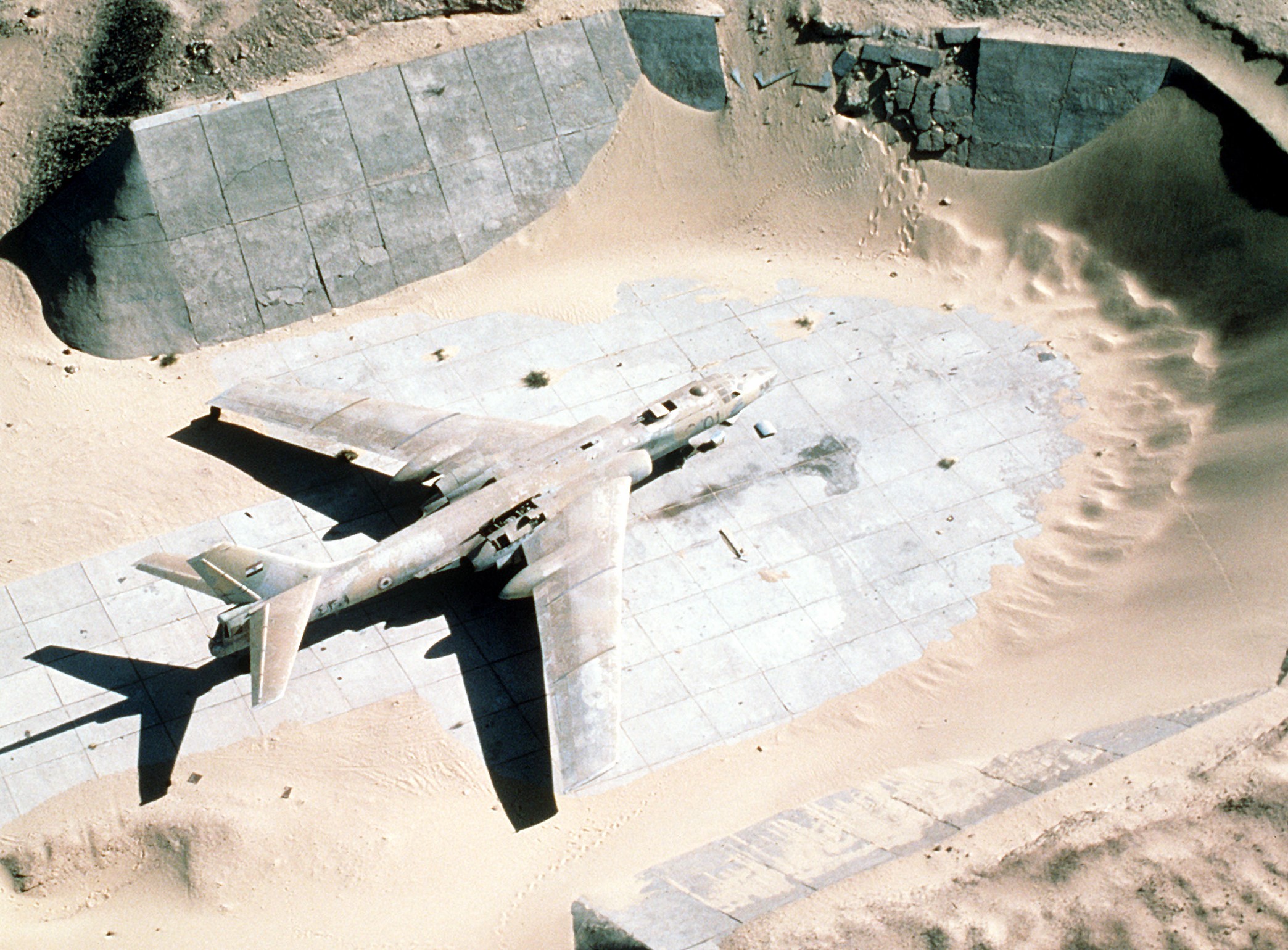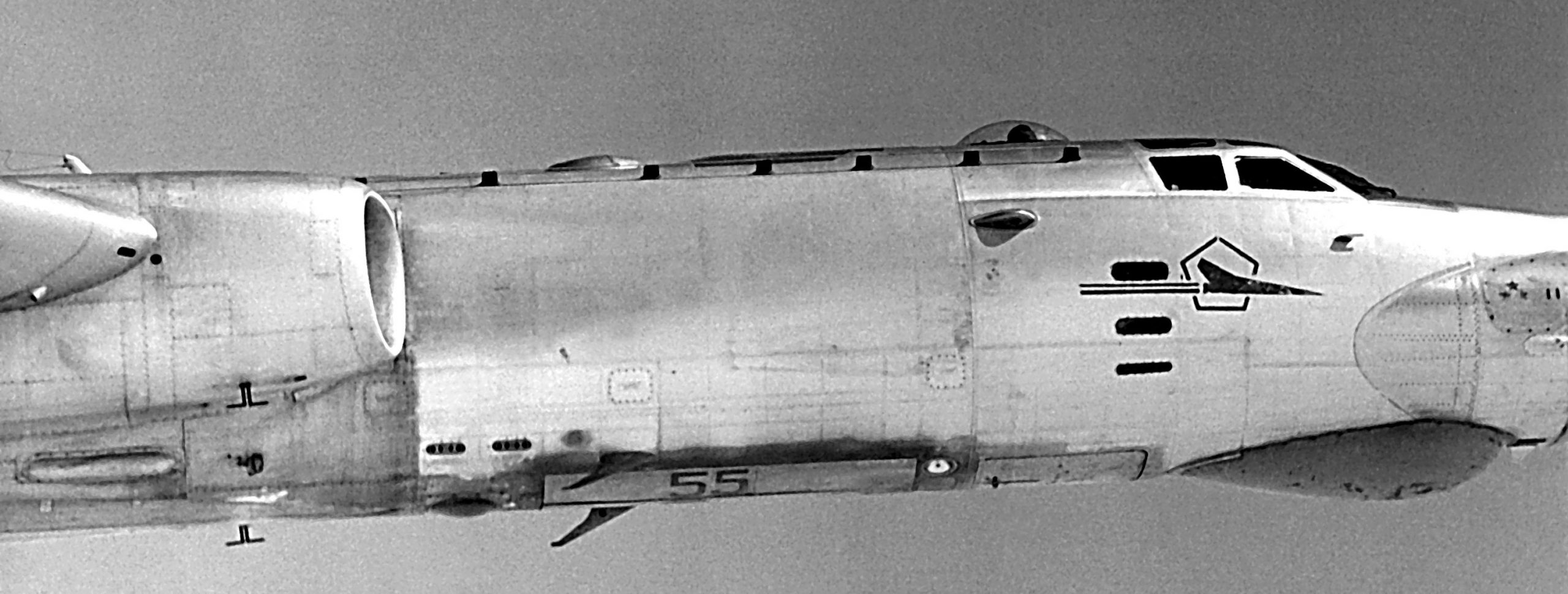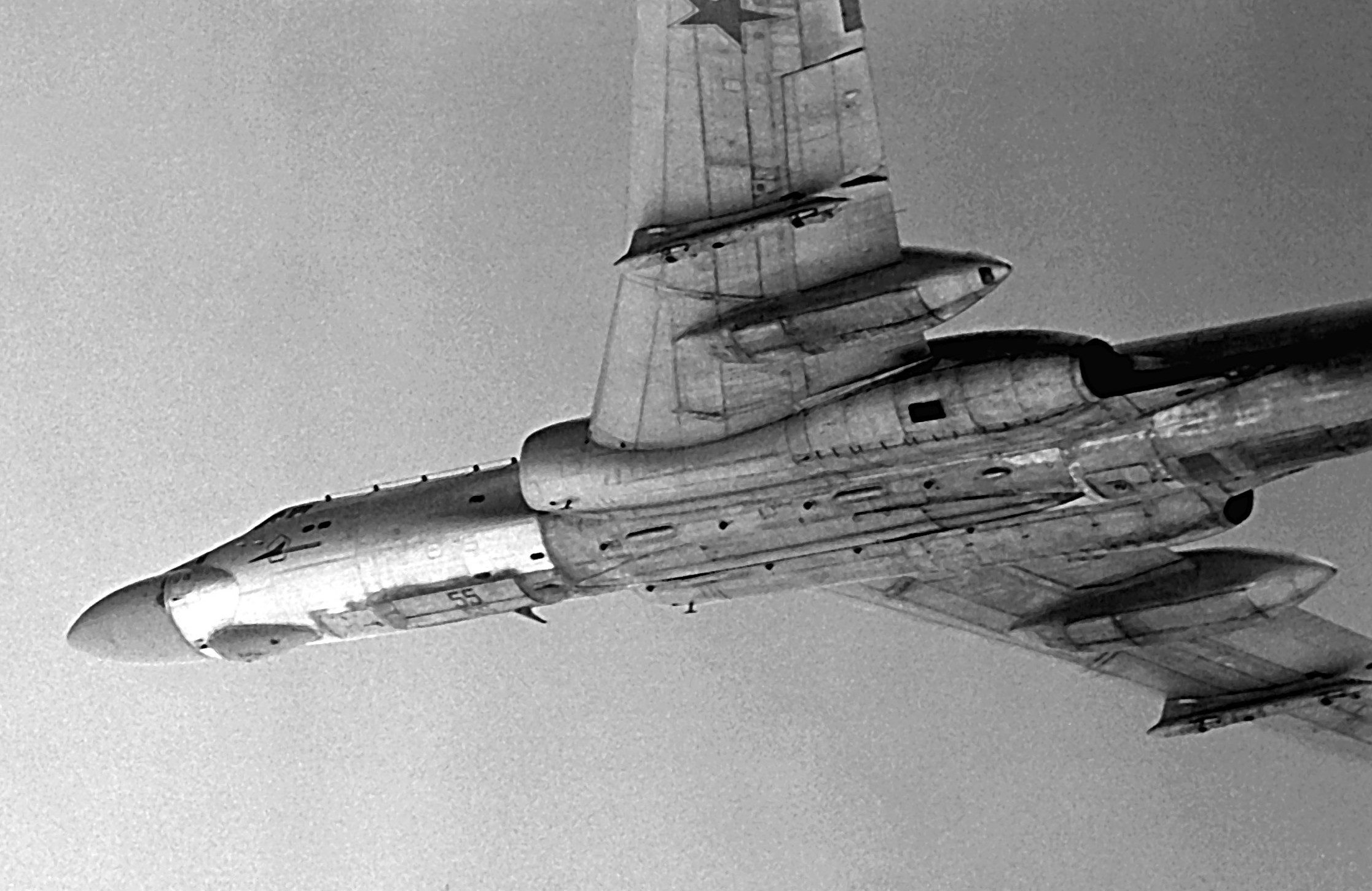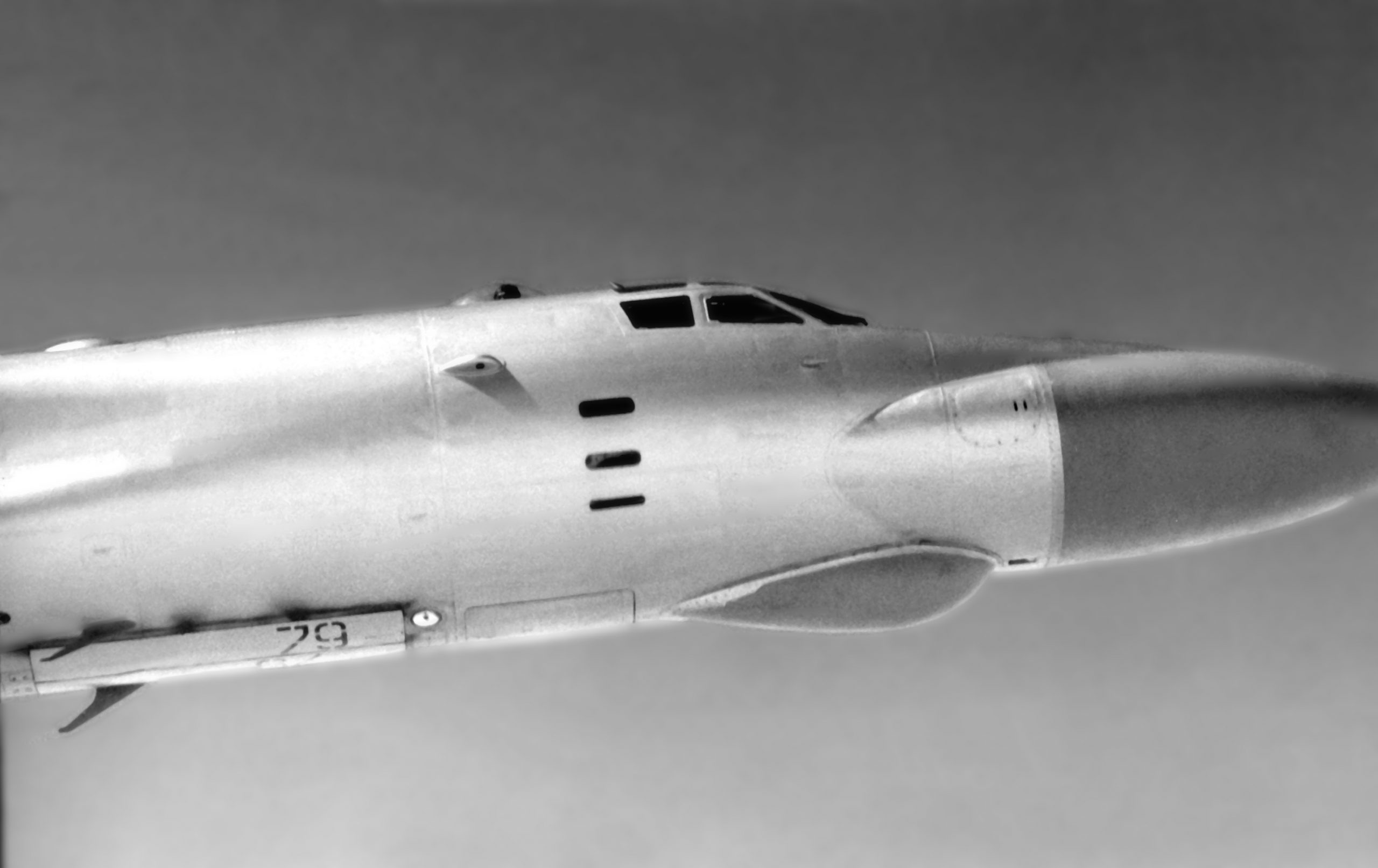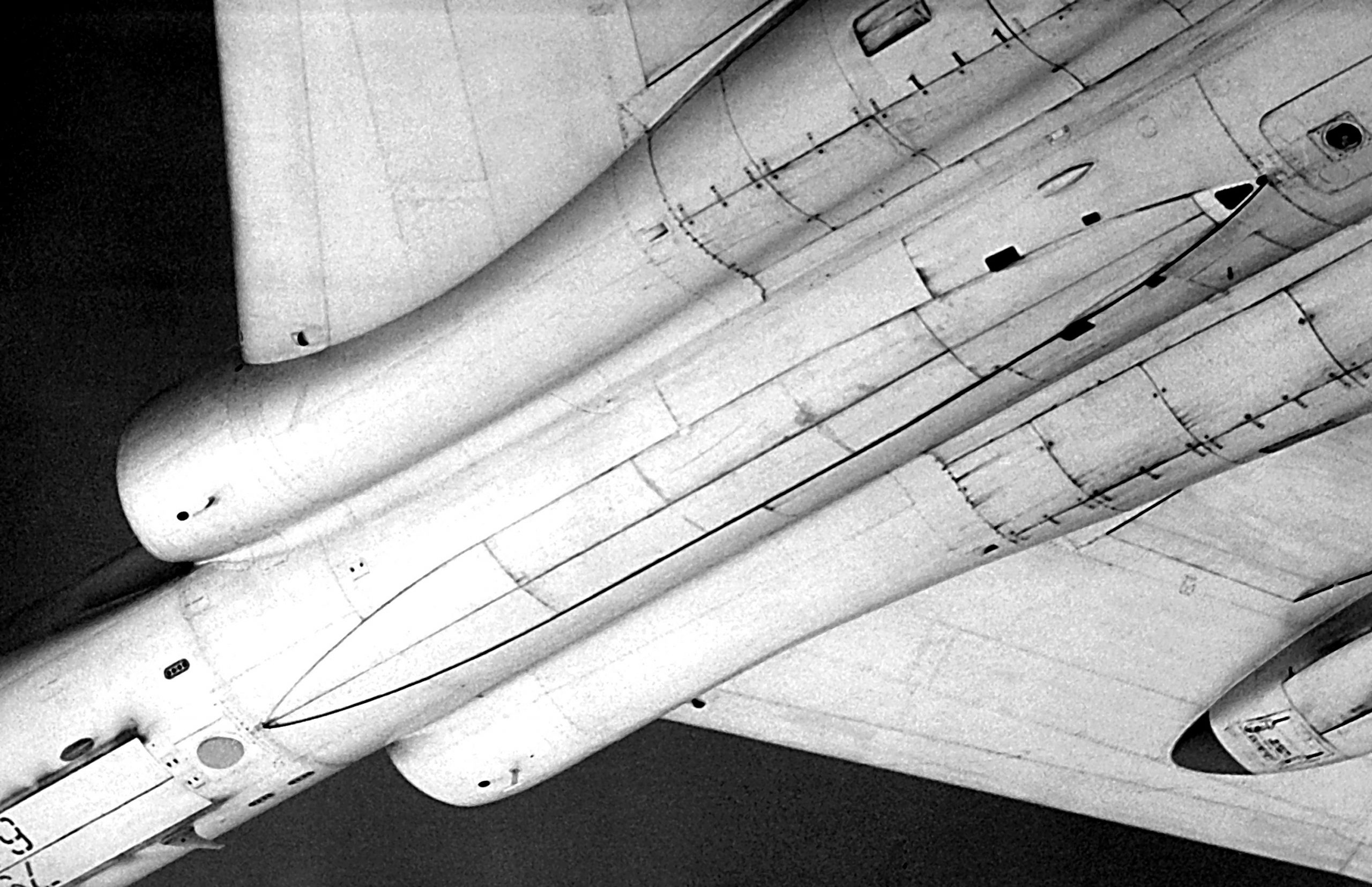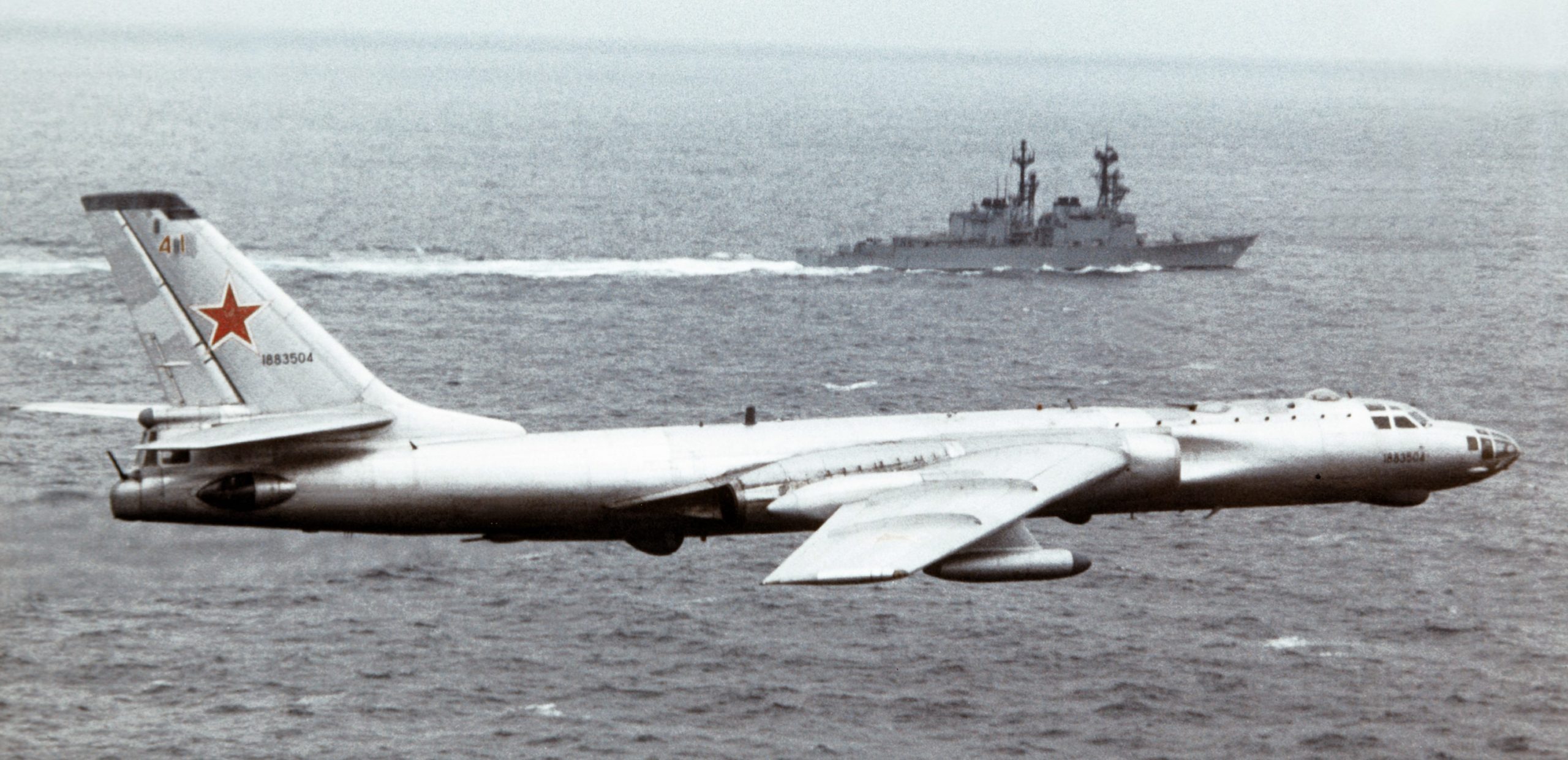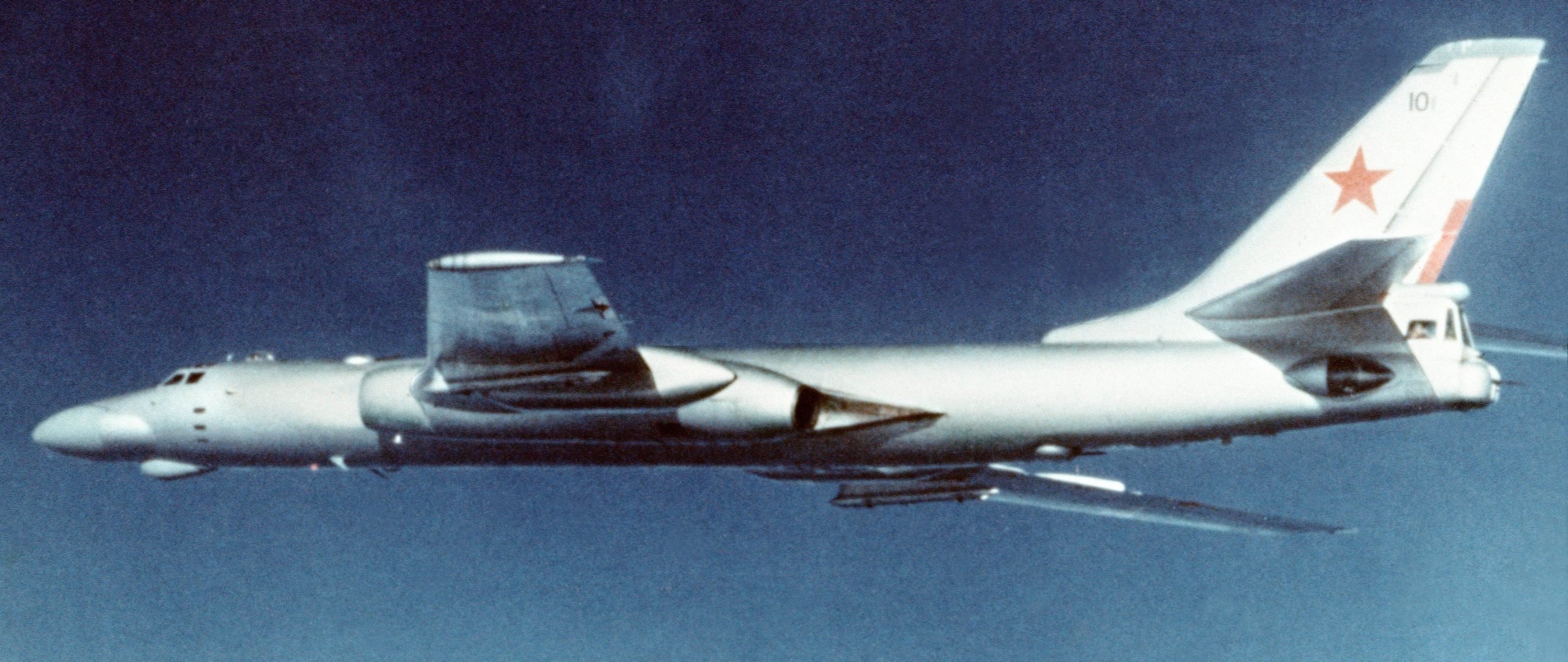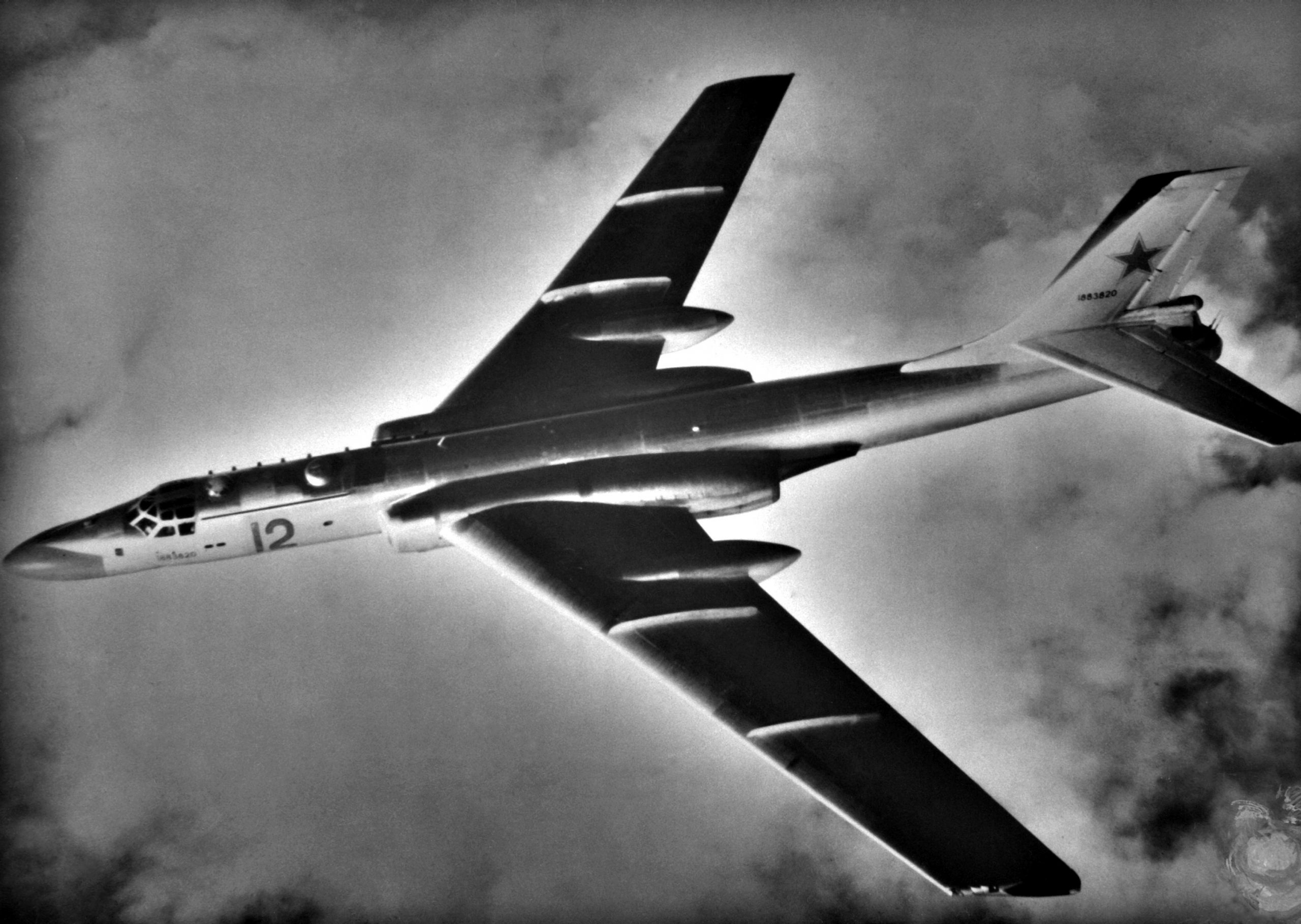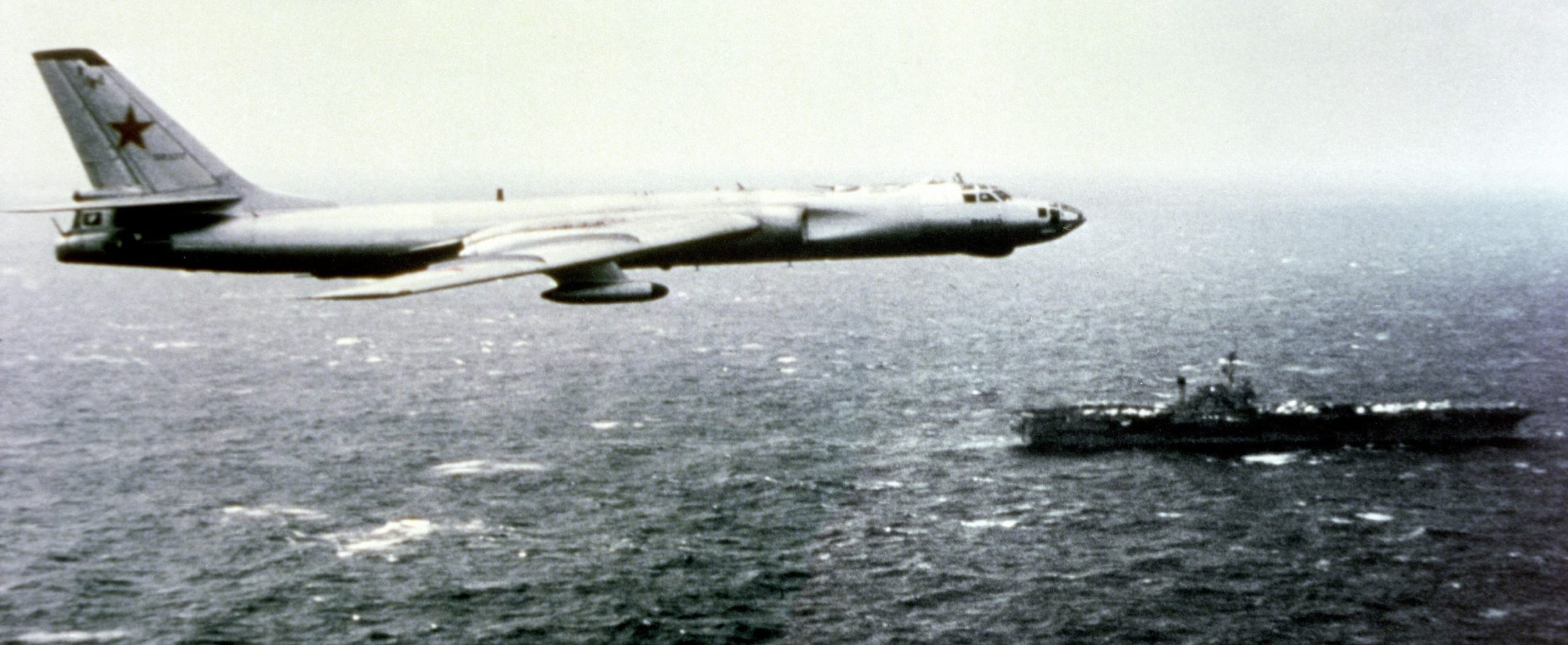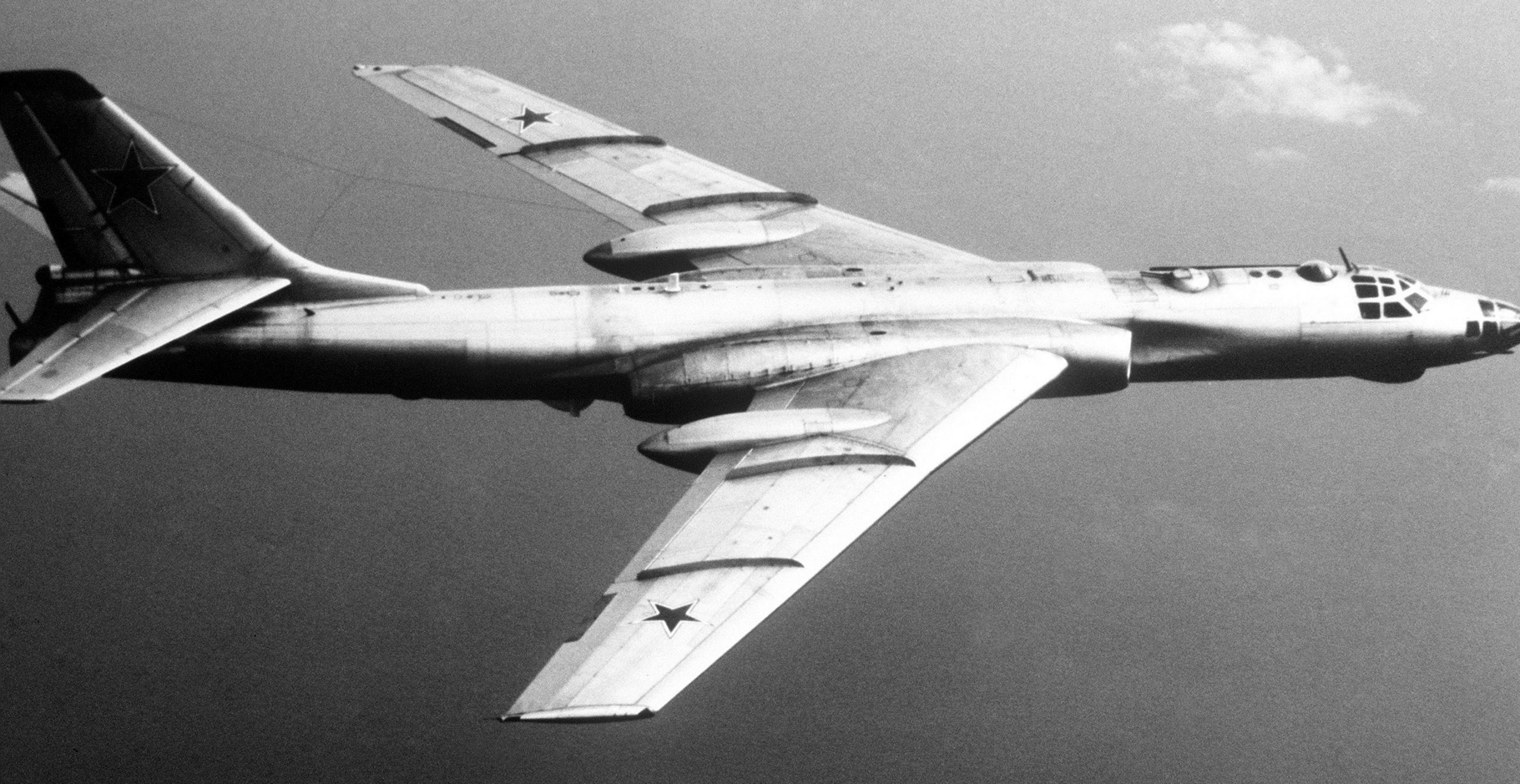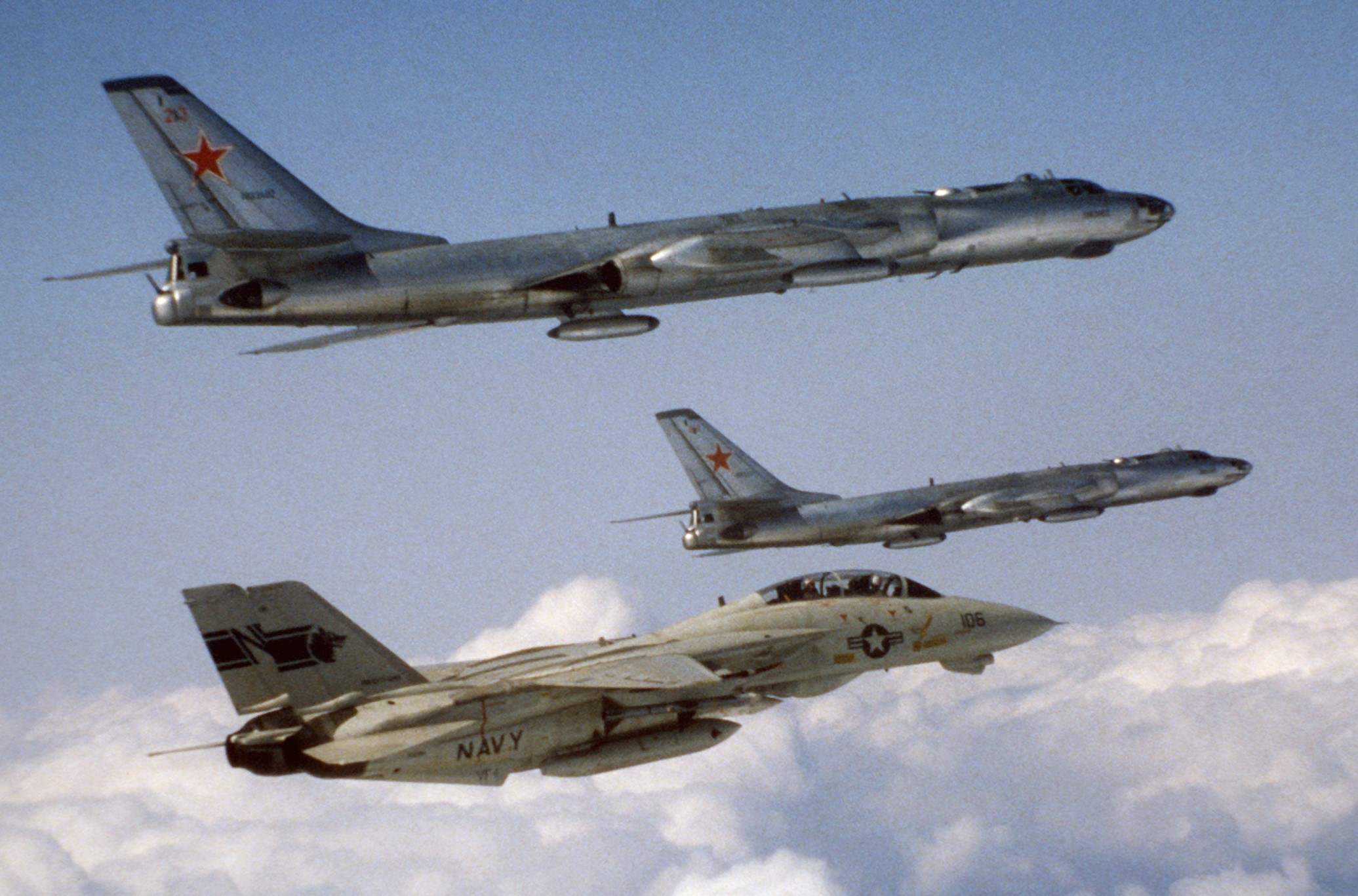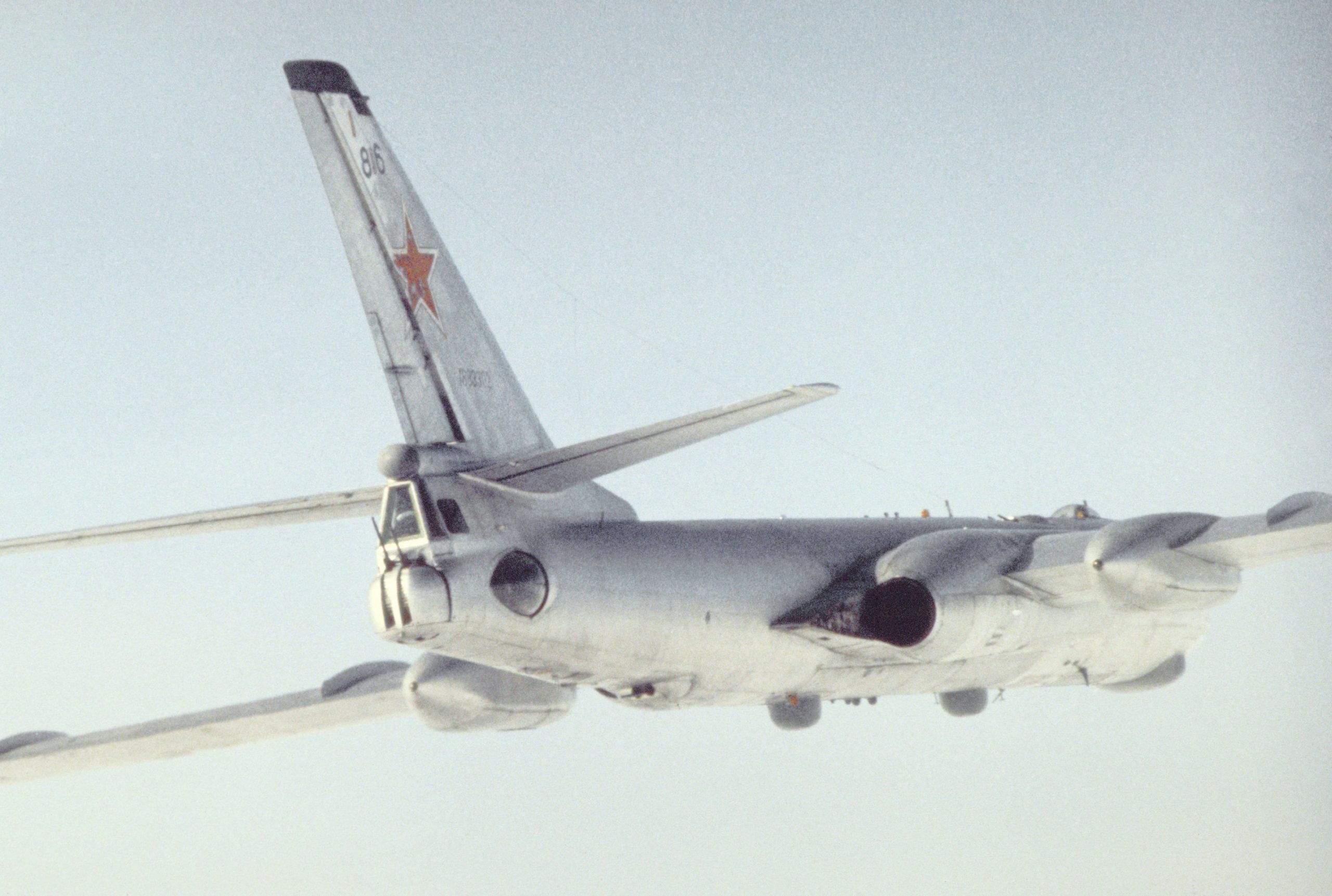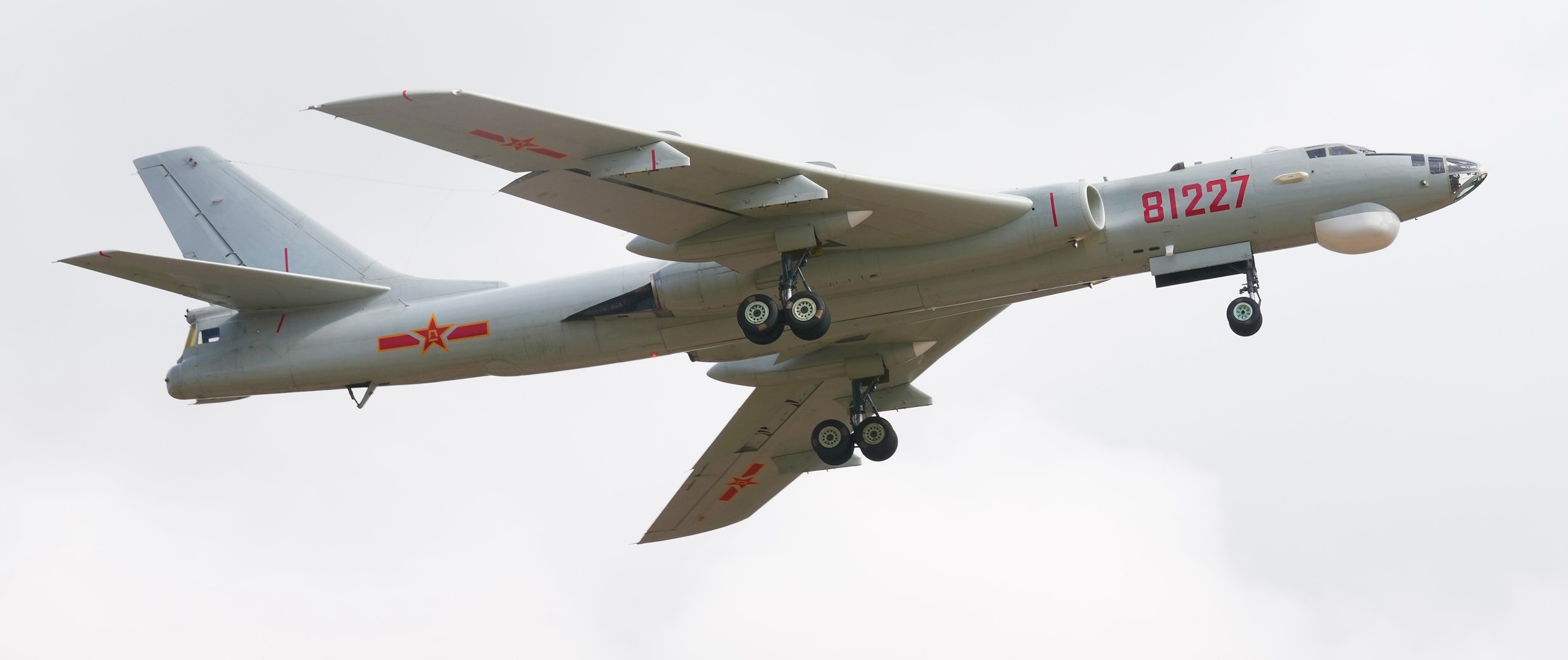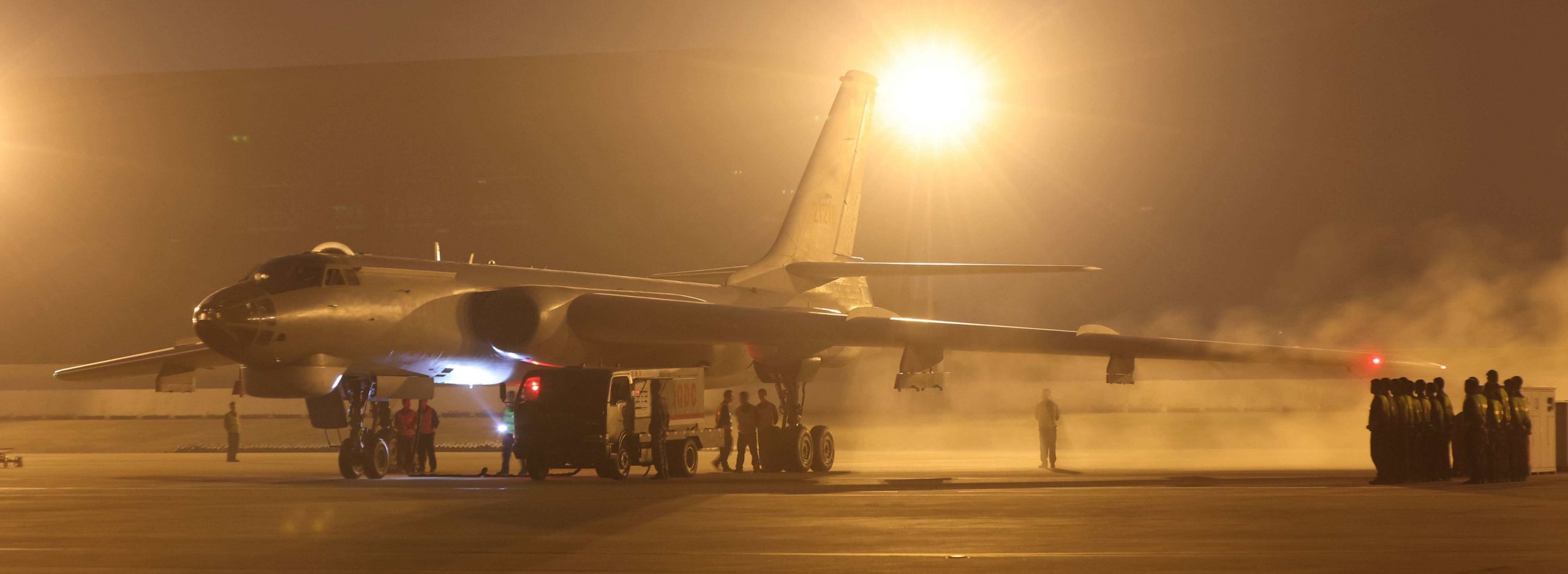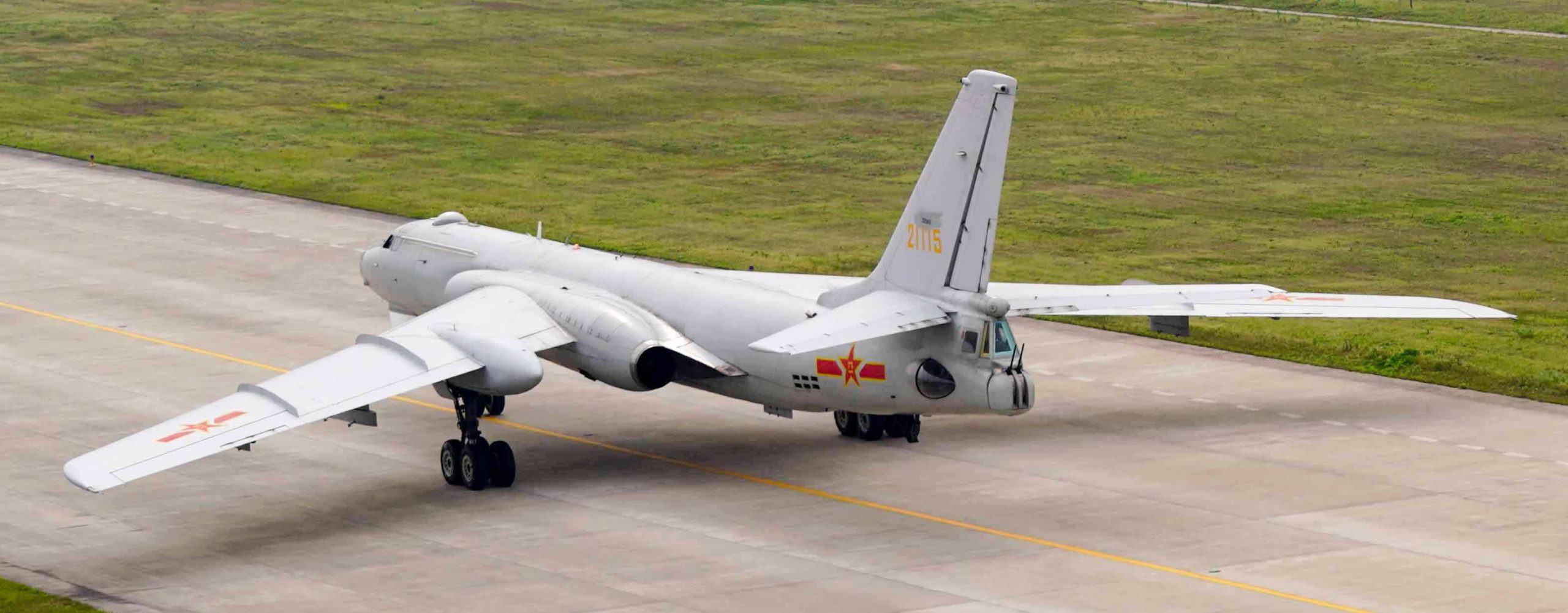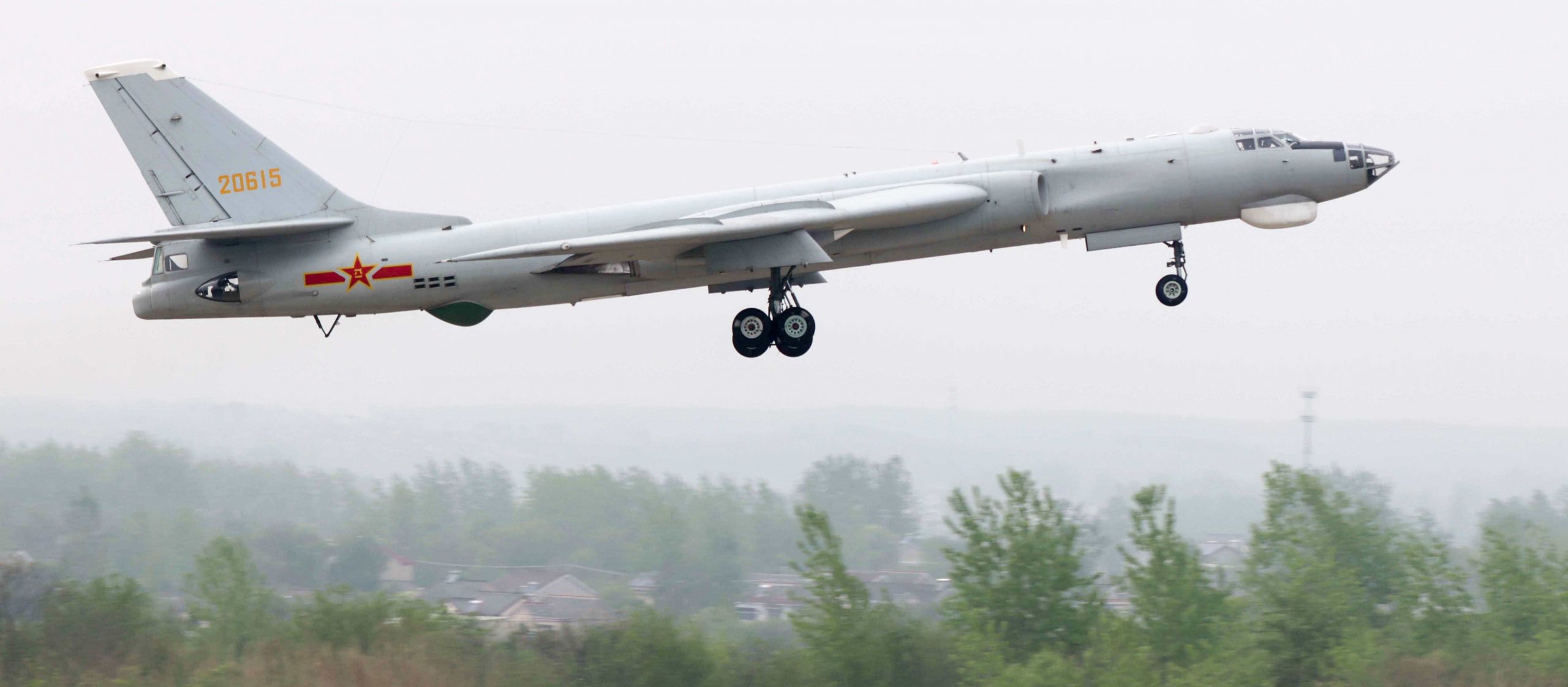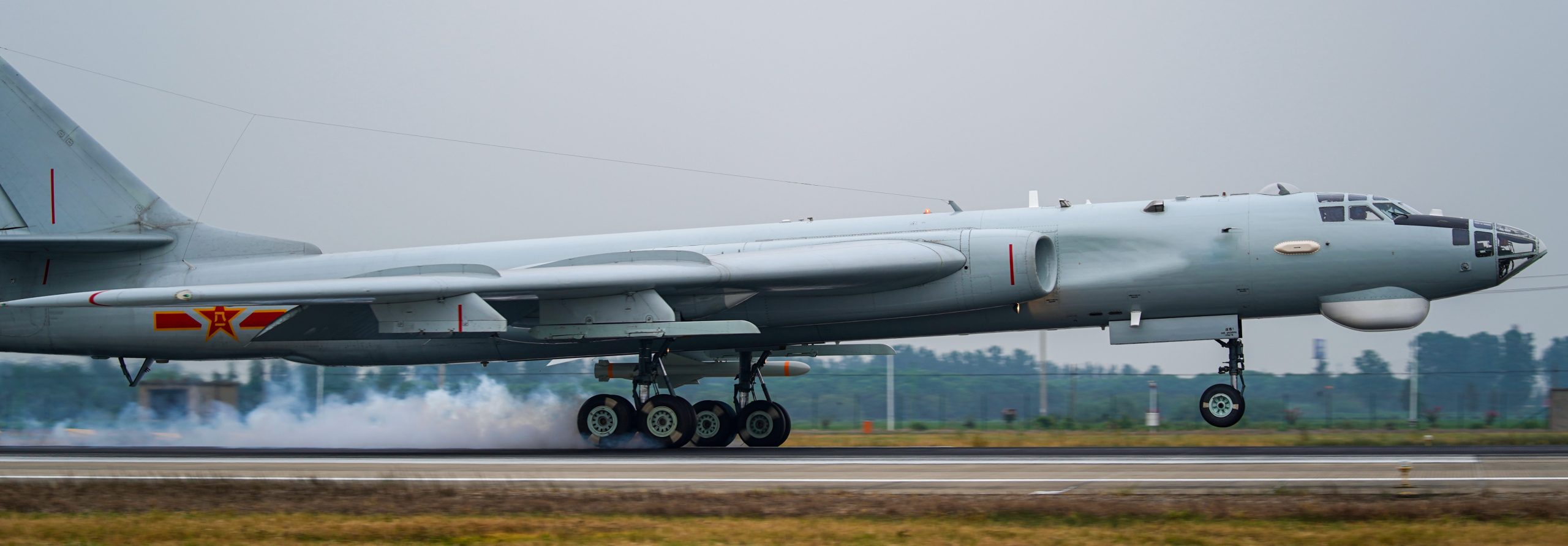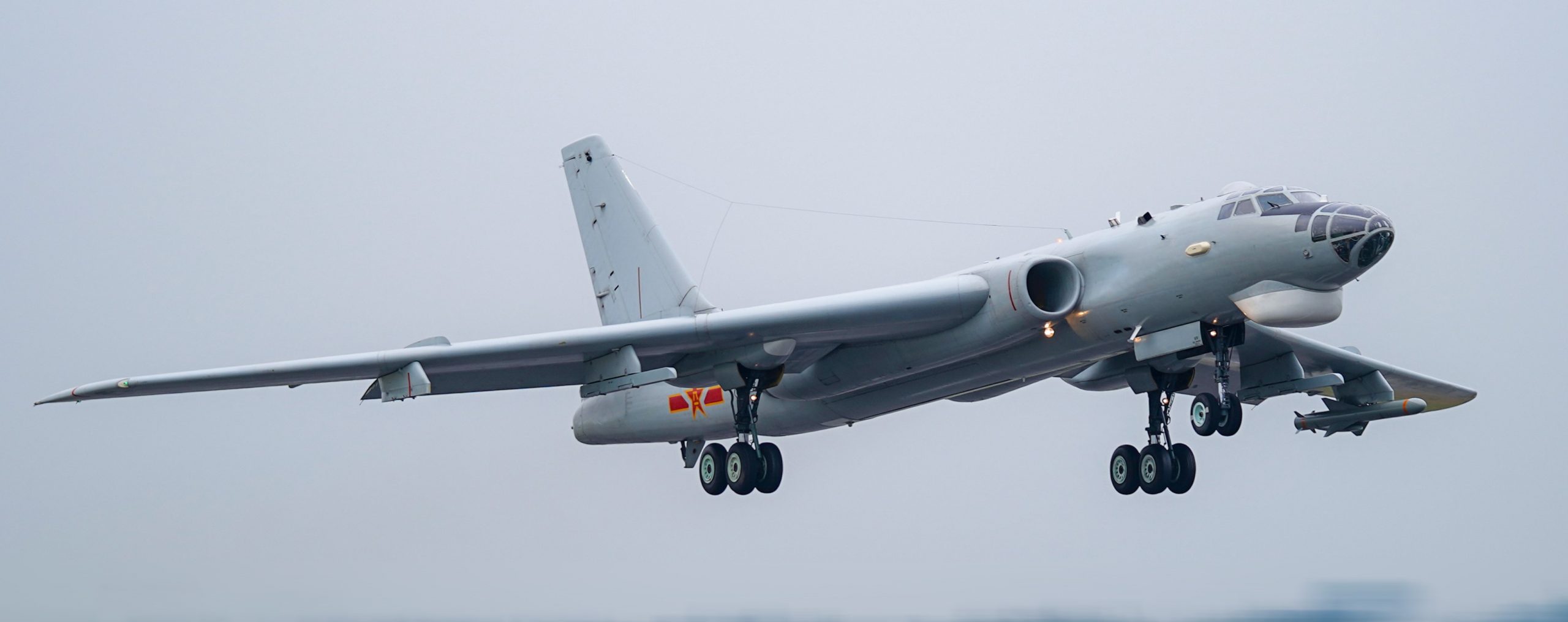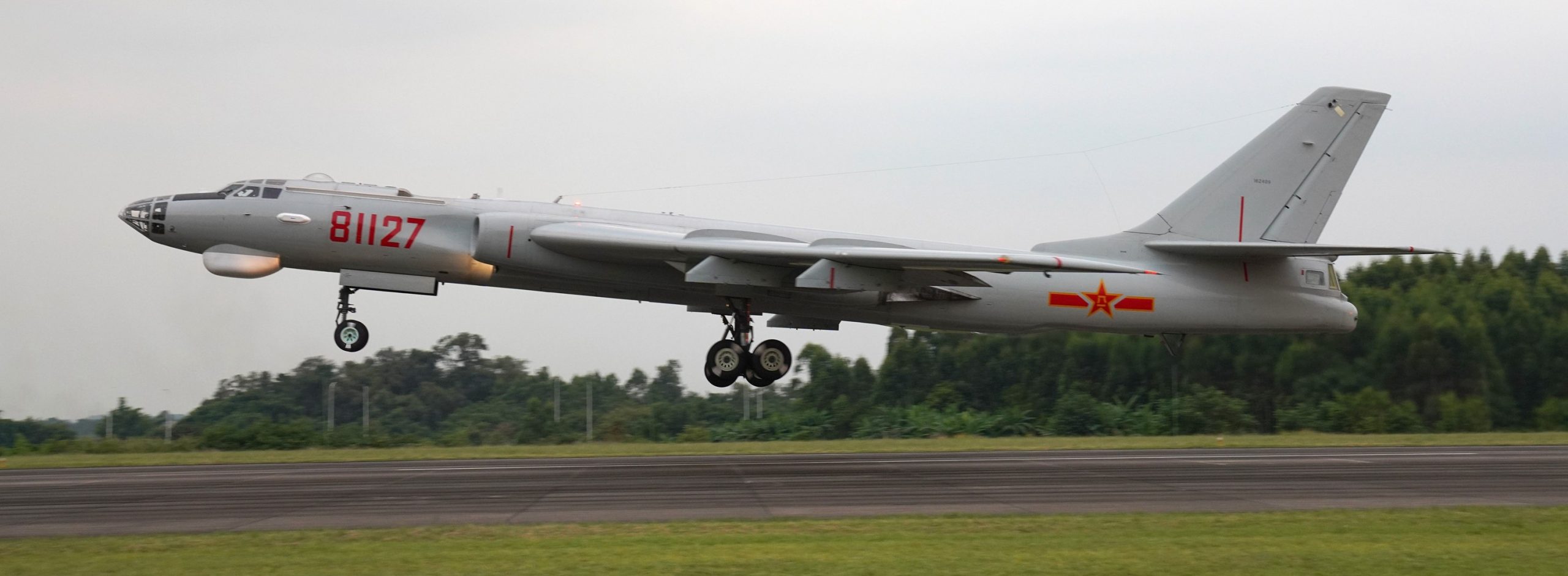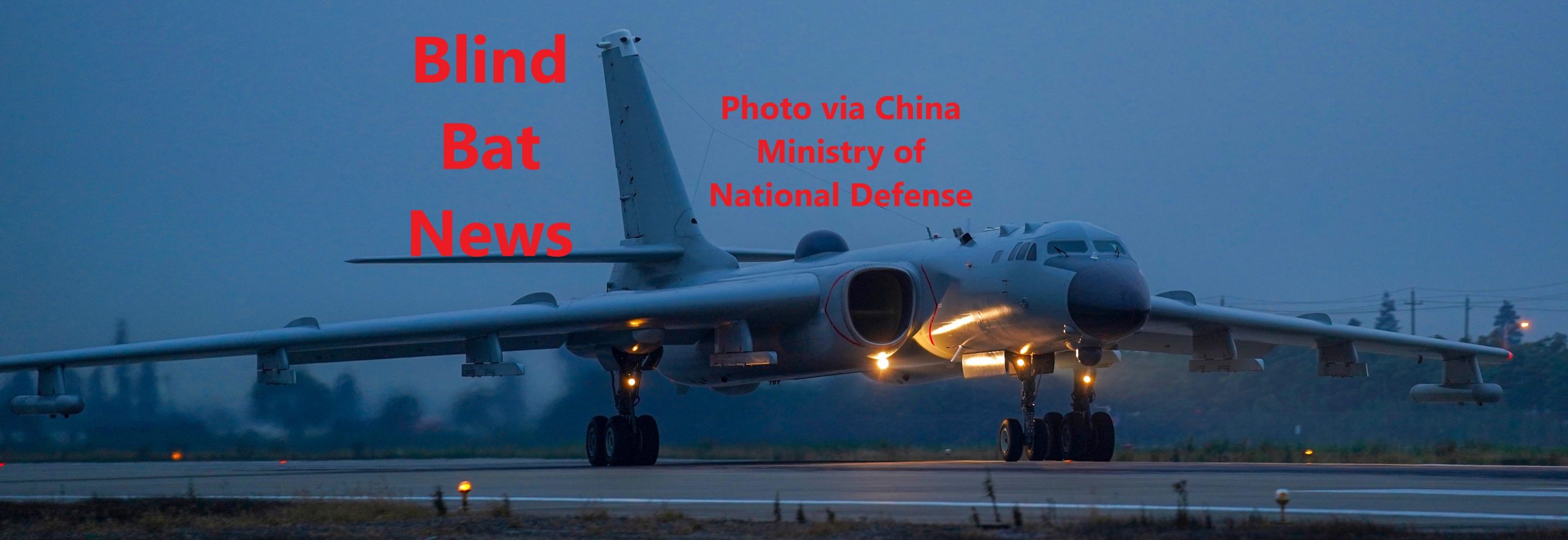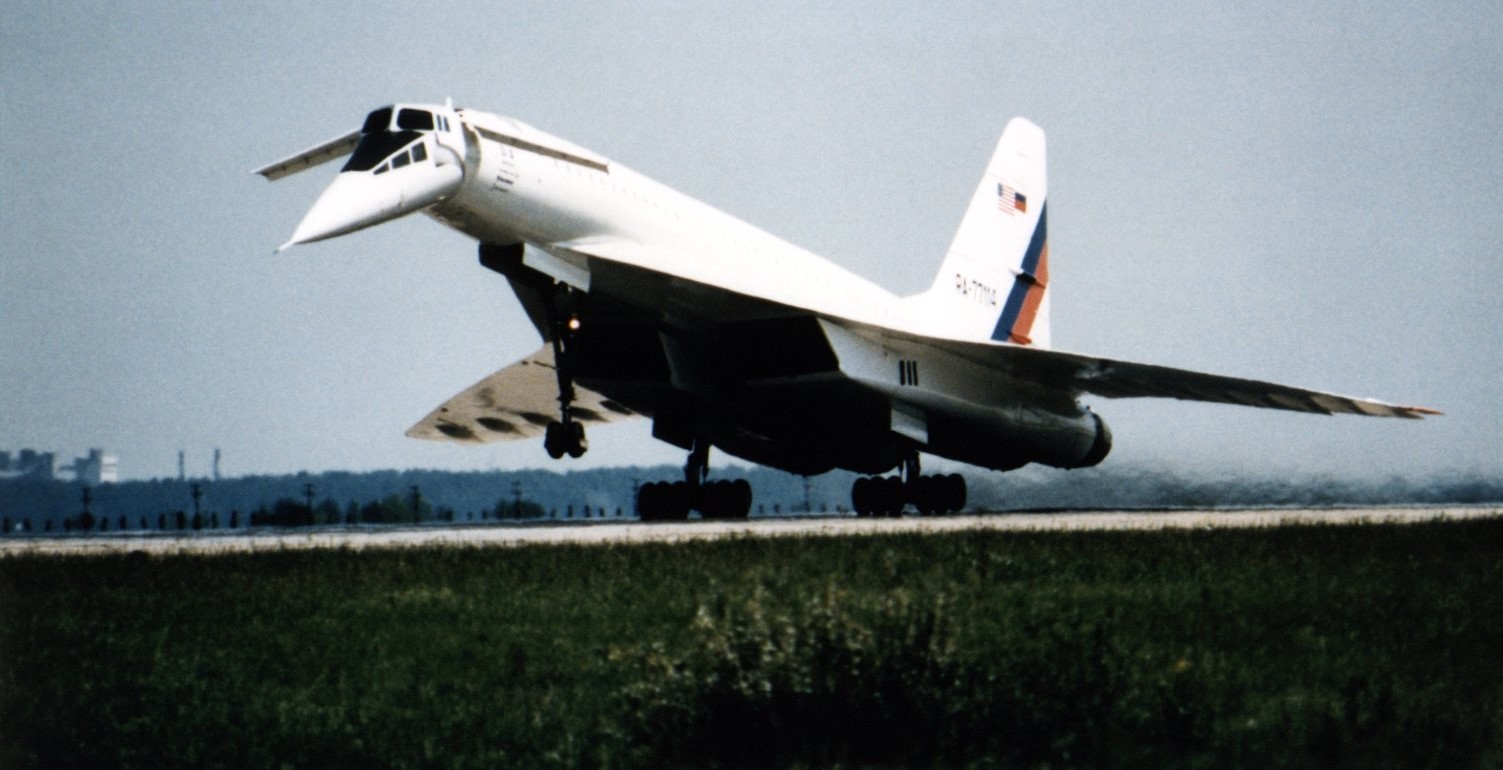Tupolev 16, NATO reporting name Badger.
Cold War: Approximately 1947 (due to U.S. President Harry Truman’s Truman Doctrine) to 1991 (Operation Desert Storm, collapse of Soviet Union).
The prototype of the Soviet Tu-16 was the Tu-88, which first flew in Spring 1952, production of the Tu-16 began in December 1952. China still produces its own version.
Silent Soviet films, from 1957, showing-off their new Tupolev 16:
On 25MAY1968, the U.S. Navy (USN) carrier group led by USS Essex CVS-9 was ‘badgered’ by several Soviet aircraft, including variants of the Tu-16, while sailing through the Norwegian Sea. It ended badly for one hot-shot Badger.
Silent USN film of Tu-16 Badger C:
Silent USN film of Badger C and Badger G:
A Badger gets danger-close to the USS Essex, while other Badgers fly at sea level:
The USN claimed one of the hot-shot Badgers crashed while sea skimming, and USN Sea Kings were dispatched to rescue the Soviet Tu-16 crew. The silent, and faded, film shows a Tu-16 buzzing USS Essex, then on the horizon can barely be seen the smoke plume of the crashed Badger, other Tu-16s continue to overfly CVS-9:
Unfortunately the Badger crew did not survive, what was recovered by the USN was handed over to a Soviet Kotlin class destroyer with the hull number of 311, which had pulled along side the USS Essex:
After taking on the bodies of the Badger crew, hull number 311 gives a salute with its main guns, and sails away:
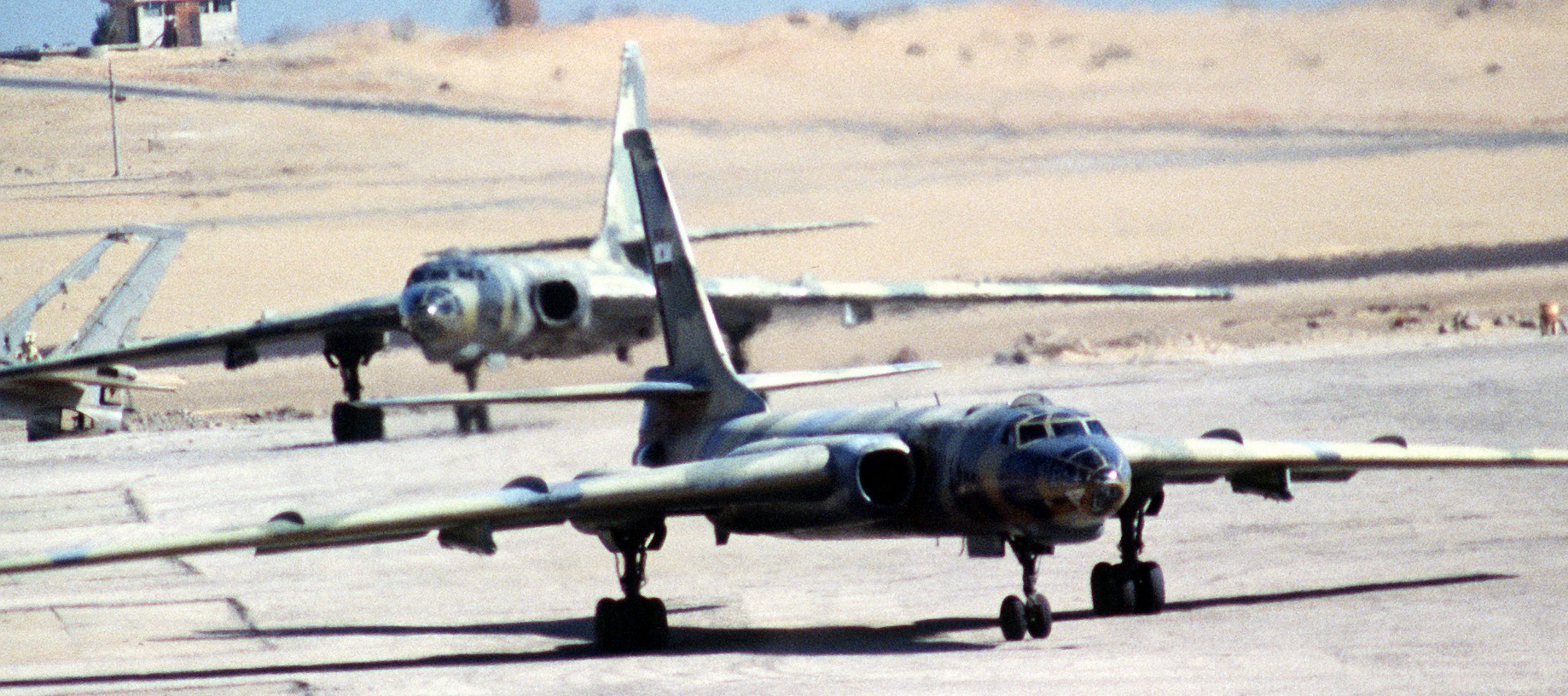
Egyptian Tu-16s. U.S. Air Force photo by Master Sergeant Donald Sutherland, dated 01NOV1980 (which is probably incorrect as the info also says it was during Bright Star 90).

This U.S. DoD released photo says it is a Badger C, sometime in 1981, however it is unknown who made the photo, or where the photo was recorded.
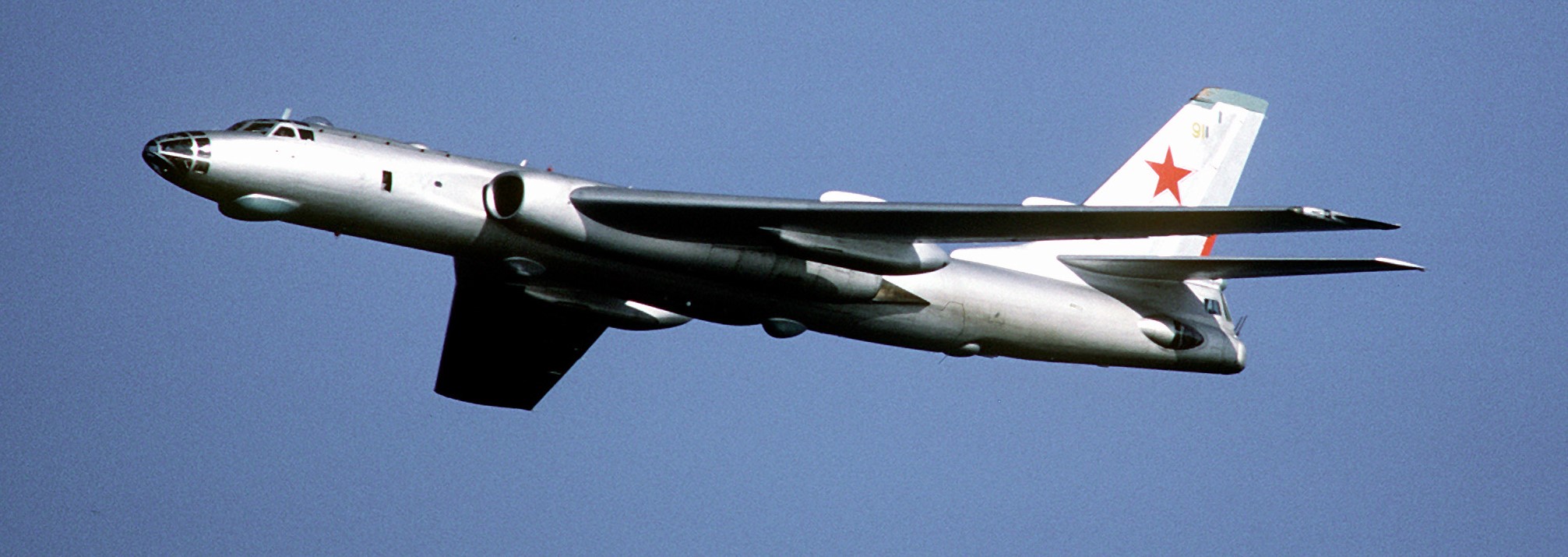
Badger D spying on NATO naval wargames in September 1986. U.S. Navy photo by Photographer’s Mate First Class Jeff Hilton.
In 1958 China received its first Tu-16, then in 1959, the first Xian Aircraft Corporation license built Tu-16 took flight, under the designation H-6.
PLA Eastern Theater Command video, edited by Lin Congyi, of Tu-16s (H-6), and the new H-6K, conducting night training, 02JUN2022:
PLA video, edited by Chen Zhuo, Tu-16s (H-6), and the new H-6K, practice low level bombing, 29NOV2021:
China is also using their new home grown version of the Tu-16, the H-6K.
Cold War Vehicle I-D: 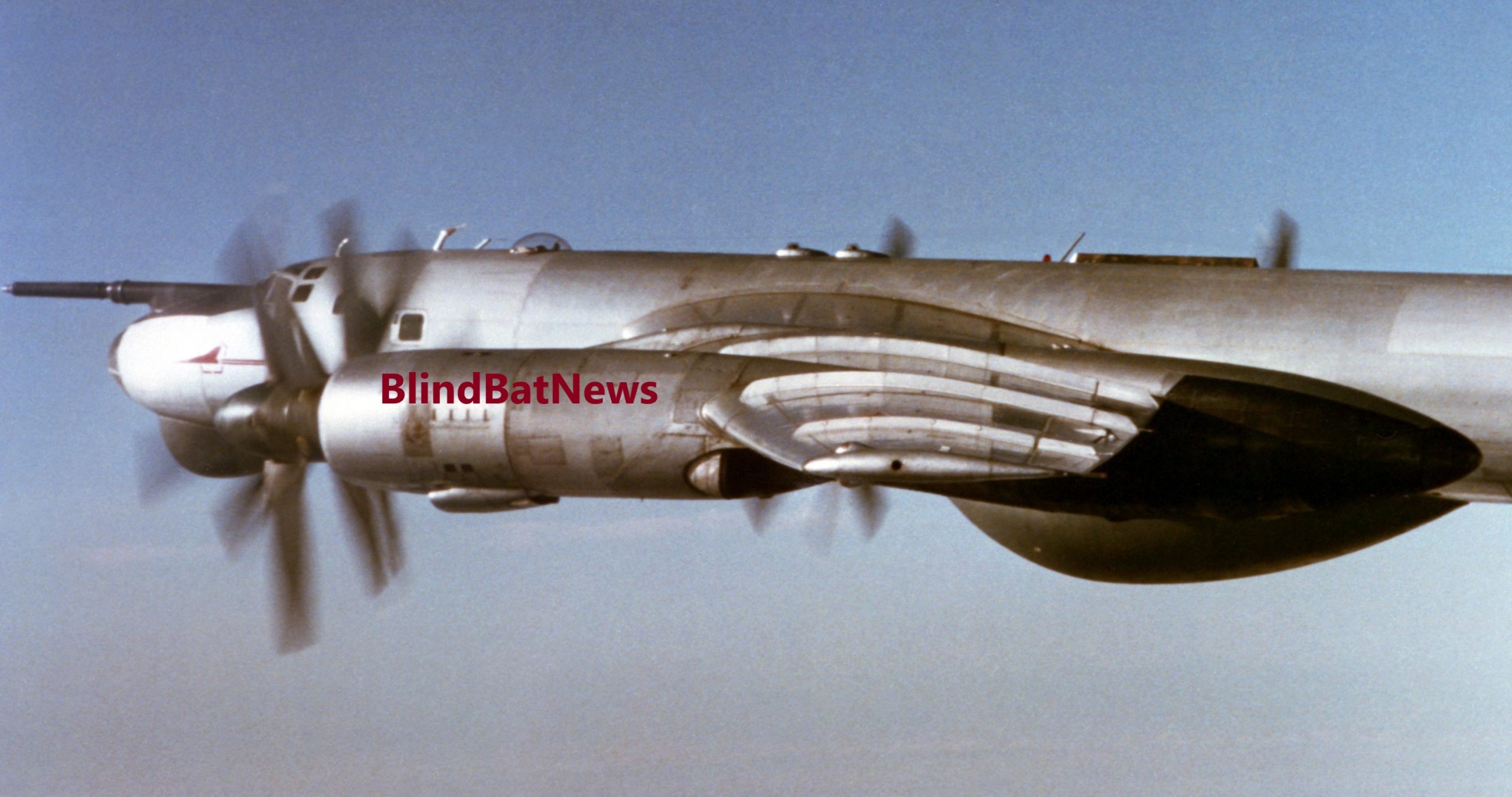 TU-95 ‘BEAR’
TU-95 ‘BEAR’
NASA’S RUSSIAN TUPOLEV 144 SST, MORE MONEY SPENT ON THE U.S. AIRLINER INDUSTRY

